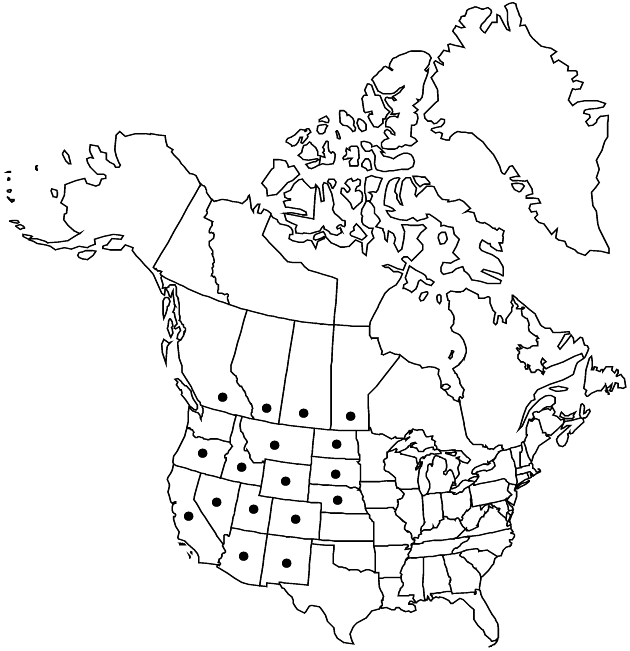Artemisia cana
Fl. Amer. Sept. 2: 521. 1813.
Shrubs, 50–150 cm (trunks definite, freely branched from bases, branches erect), pleasantly aromatic; root-sprouting. Stems light brown to gray-green (woody, somewhat pliable, leafy), persistently canescent to glabrescent. Leaves deciduous, whitish gray or green to dark gray-green; blades narrowly elliptic to lanceolate, 1.5–8 × 0.2–1 cm, usually entire, sometimes irregularly lobed, sparsely to densely hairy. Heads in (congested, leafy) paniculiform arrays 10–20 × 0.2–7 cm. Involucres (subtended by green, leaflike bracts) narrowly to broadly campanulate, 3–4 × 2–5 mm. Phyllaries ovate or lanceolate (scarious margins nearly invisible), densely canescent. Florets 4–20; corollas 2–3 mm, resinous (style branches ellipsoid, to 2.3 mm, exsert, gland-dotted). Cypselae (light brown) 1–2.3 mm, resinous.
Distribution

w North America.
Discussion
Subspecies 3 (3 in the flora).
Selected References
None.
Lower Taxa
Key
| 1 | Shrubs 100–150 cm; leaves 2–8 cm (entire); primarily e of continental divide | Artemisia cana subsp. cana |
| 1 | Shrubs 50–90 cm; leaves 1.5–4 cm (usually some with irregular lobes); w of continental divide | > 2 |
| 2 | Stems felty-tomentose; leaves green to gray-green; involucres 4–5 mm diam.; California, Nevada, Oregon | Artemisia cana subsp. bolanderi |
| 2 | Stems hairy (not felty-tomentose); leaves green to dark green; involucres 2–3(–4) mm diam.; Arizona, Colorado, Idaho, Montana, Nevada, New Mexico, Utah, Wyoming | Artemisia cana subsp. viscidula |